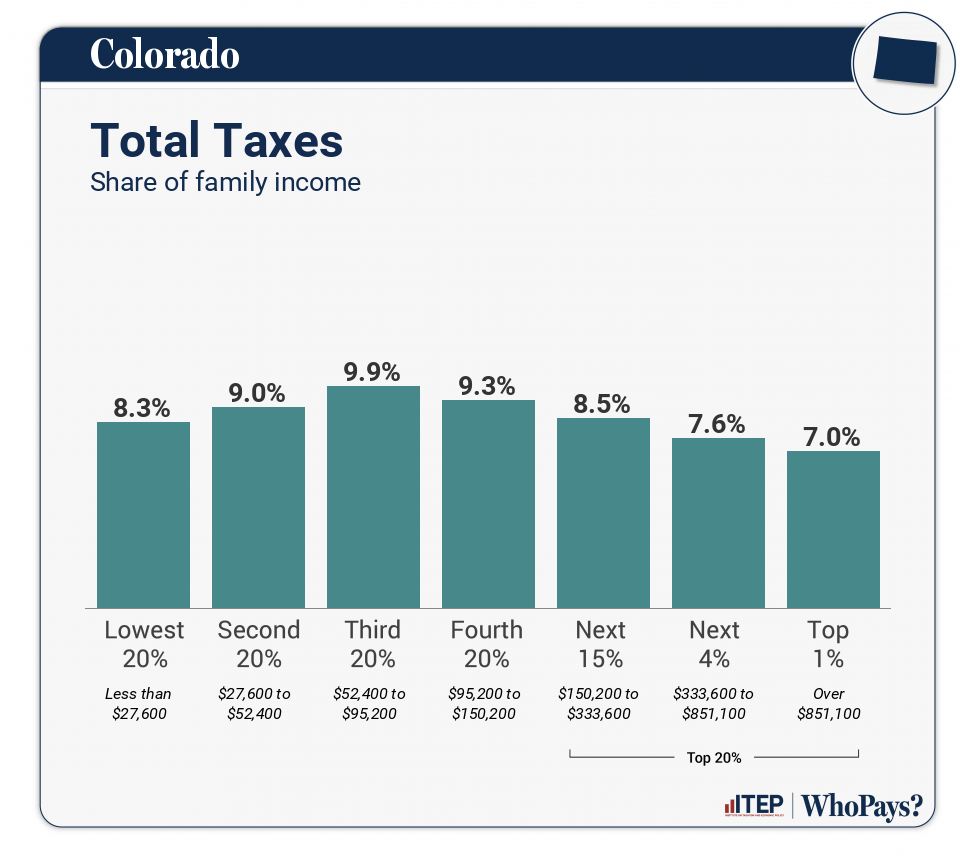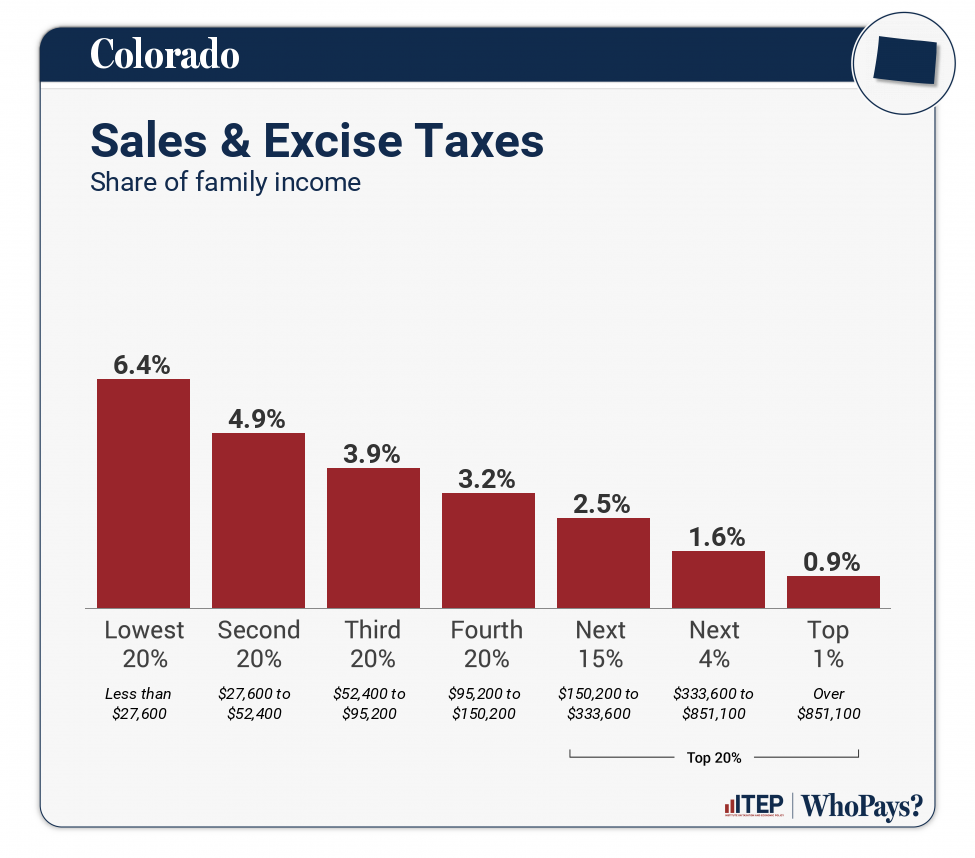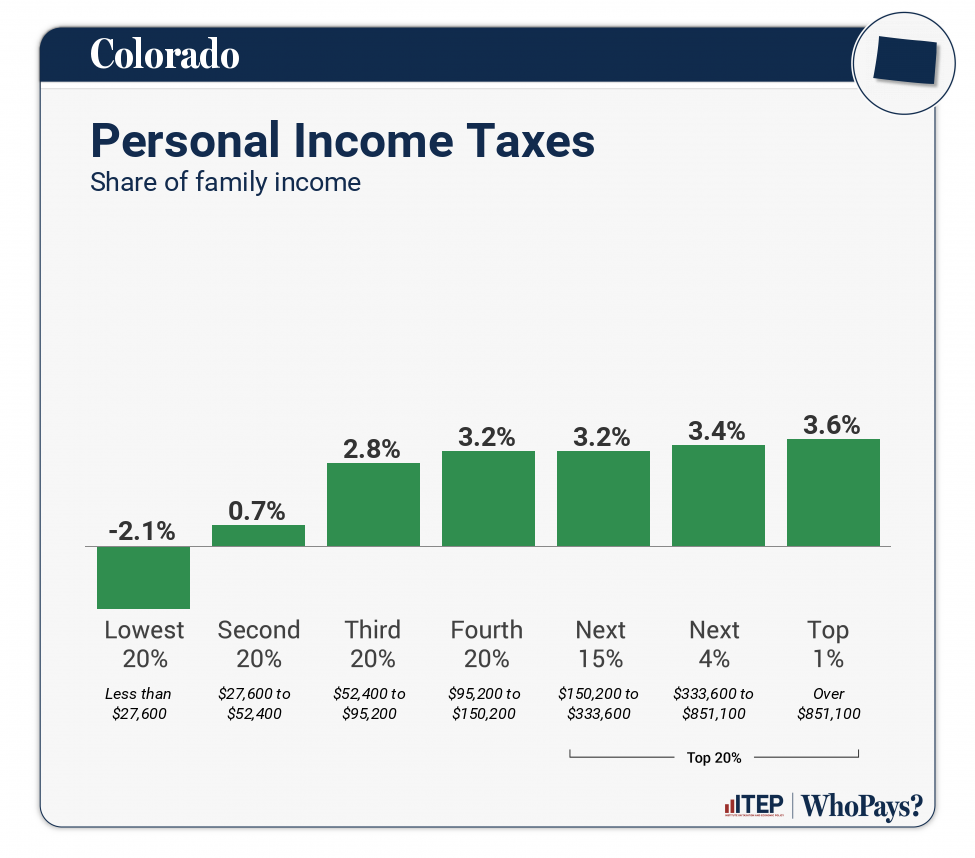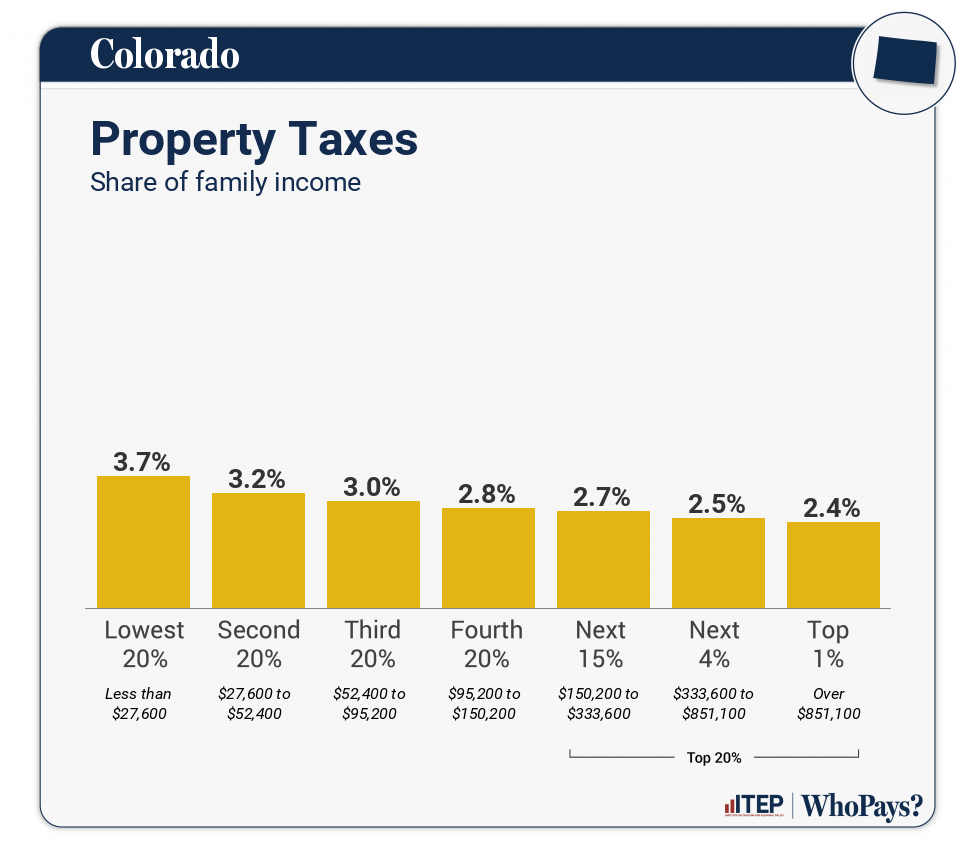
Colorado
Download PDF
State and local tax shares of family income
| Top 20% | |||||||
| Income Group | Lowest 20% | Second 20% | Middle 20% | Fourth 20% | Next 15% | Next 4% | Top 1% |
| Income Range | Less than $27,600 | $27,600 to $52,400 | $52,400 to $95,200 | $95,200 to $150,200 | $150,200 to $333,600 | $333,600 to $851,100 | Over $851,100 |
| Average Income in Group | $15,100 | $40,500 | $71,900 | $123,600 | $212,200 | $504,600 | $2,357,300 |
| Sales & Excise Taxes | 6.4% | 4.9% | 3.9% | 3.2% | 2.5% | 1.6% | 0.9% |
| General Sales–Individuals | 2.7% | 2.6% | 2.1% | 1.7% | 1.3% | 0.7% | 0.2% |
| Other Sales & Excise–Ind | 2.2% | 1% | 0.7% | 0.4% | 0.3% | 0.2% | 0% |
| Sales & Excise–Business | 1.5% | 1.4% | 1.2% | 1% | 0.9% | 0.7% | 0.6% |
| Property Taxes | 3.7% | 3.2% | 3% | 2.8% | 2.7% | 2.5% | 2.4% |
| Home, Rent, Car–Individuals | 2.7% | 2.2% | 2% | 2% | 1.7% | 1.3% | 0.4% |
| Other Property Taxes | 1% | 1% | 1% | 0.9% | 1% | 1.2% | 2% |
| Income Taxes | -2% | 0.7% | 2.8% | 3.2% | 3.2% | 3.4% | 3.7% |
| Personal Income Taxes | -2.1% | 0.7% | 2.8% | 3.2% | 3.2% | 3.4% | 3.6% |
| Corporate Income Taxes | 0% | 0% | 0% | 0% | 0% | 0% | 0.1% |
| Other Taxes | 0.2% | 0.1% | 0.1% | 0.1% | 0.1% | 0.1% | 0.1% |
| TOTAL TAXES | 8.3% | 9% | 9.9% | 9.3% | 8.5% | 7.6% | 7% |
| Individual figures may not sum to totals due to rounding. | |||||||
ITEP Tax Inequality Index
Colorado has a hybrid system that is progressive through the bottom part of the income distribution and regressive through the top part. On balance, the overall system tilts regressive because high-income families pay the lowest overall tax rates. According to ITEP’s Tax Inequality Index, Colorado has the 39th most regressive state and local tax system in the country. Income disparities between high-income taxpayers and other families are larger in Colorado after state and local taxes are collected than before. (See Appendix B for state-by-state rankings and the report methodology for additional detail.)
Tax features driving the data in Colorado
|
Requires combined reporting for the corporate income tax; some foreign tax haven income is partially taxed through GILTI inclusion
Refundable Child Tax Credit (CTC) for young children
Refundable Earned Income Tax Credit (EITC)
State sales tax base excludes groceries
Comparatively large standard deduction
Refundable dependent care tax credit
|
|
|
No property tax “circuit breaker” credit for low-income, non-senior taxpayers
Does not levy a tax on estates or inheritances
Local sales tax bases include groceries
Personal income tax uses a flat rate
|









